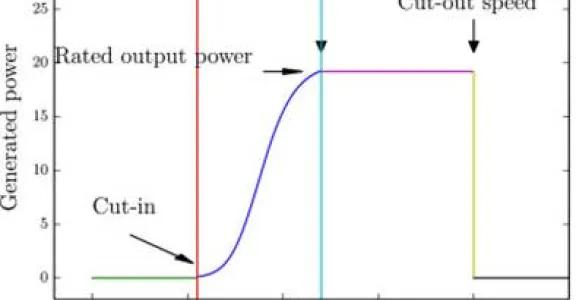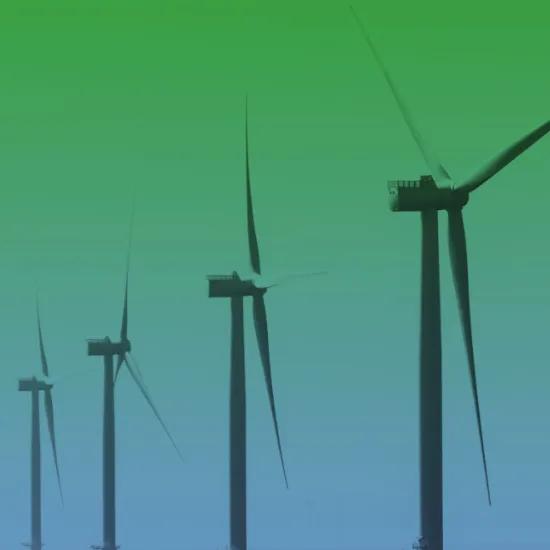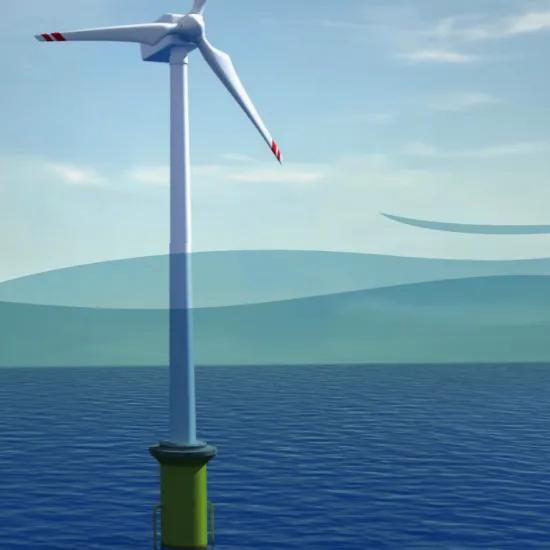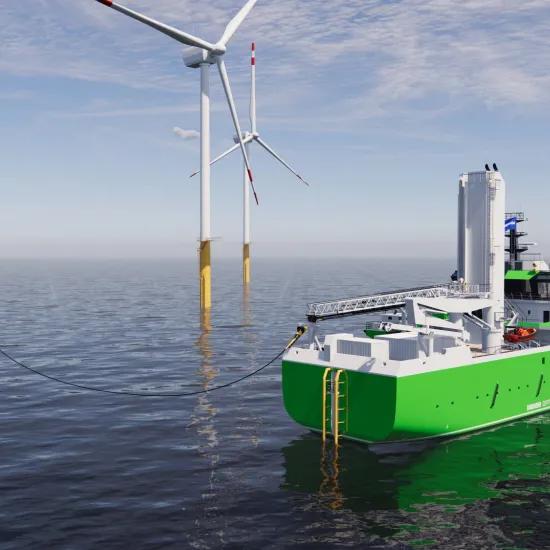Research in the context of the VIS-OWOME project has demonstrated that very accurate power curves for offshore wind turbines can be created using machine-learning techniques. Good results can be achieved in very short terms and with limited efforts.
A wind turbine is characterised by a power curve representing the relation between wind speed and the amount of electrical power that is generated. This depends on several limits. For example, when the wind speed is lower than the cut-in speed, there is not enough power to rotate the blades of the wind turbine and therefore no electricity is generated. As soon as the wind speed is high enough, electrical power will be generated, and the amount of energy is cubically dependent on the wind speed and linearly dependent on the surface of the rotating blades. A small change in wind speed will therefore have a great impact on the energy output.
In order to avoid damage to the turbine power train, every wind turbine also has a wind speed limit (rated output speed), resulting in a constant energy output (rated output power). If the wind speed becomes even higher, it will exceed a second threshold which will make sure the turbine stops to avoid damaging it.
Importance of power curves
A turbine in good condition is expected to behave according to a certain power curve. If something is wrong with the turbine, for example, damage to the components, this will affect the curve. Therefore, the power curve allows us to detect if something is wrong with a wind turbine, and if maintenance is required or not. Obviously, if we want to achieve this, we need a turbine power curve which reflects the behaviour of the turbine in good working order.
The manufacturer of the wind turbine will usually provide this curve, but due to external factors such as the location and environment of the turbine, the curve may not accurately represent the reality. Alternatively, physical models can be used to draw up the curve, but this requires a lot of expertise, time and sometimes also processing power. I order to respond to this need, a power curve can be prepared automatically either on the basis of data collected during the normal operation of the turbine, or based on machine-learning techniques.
Machine-learning algorithms
Within the OWI-Lab, in the context of the OWOME project, research was conducted to find the best performing machine-learning algorithms to model the relation between wind speed and the amount of generated electrical power, represented by a power curve. Data derived from offshore wind turbines were used for this purpose.
With regard to machine-learning algorithms, we used the k-nearest neighbour, random forest, extremely randomised trees, genetic algorithms and gradient boosted regression trees. Due to our data-mining/machine-learning expertise we succeeded in modelling this relation very accurately. Although these models were already very accurate, we were able to create even higher-performance models by the use of multivariate models (i.e. yaw motion, different blade pitch angles, rotations per second, wind direction and wind speed).
The study showed that very accurate power curves can be created on the basis of machine-learning techniques, which allows for excellent results in the very short term, and with little effort.
More information? Please contact the OWI-Lab, Sofie Van Hoecke (UGent) or Olivier Janssens (UGent).




